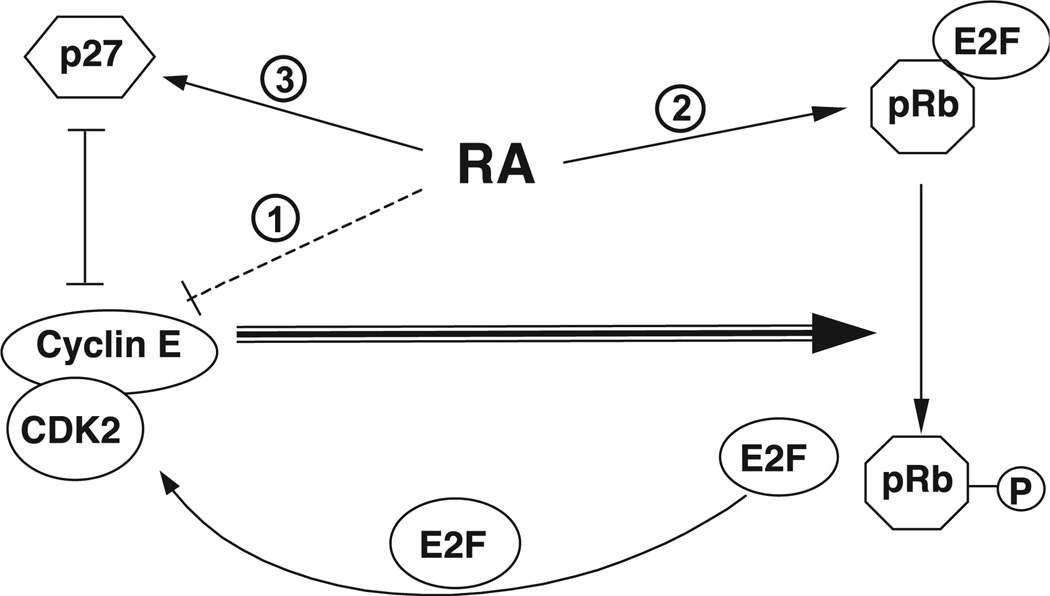Fig. 6.
A working model of retinoic acid-induced regulation of cell cycle progression in THP-1 cells. RA is proposed to regulate the differentiation of THP-1 cells through multiple pathways: (1) RA may reduce in the level of cyclin E, affecting the formation of cyclin E/CDK2 complex, and in turn reduces pRb phosphorylation; (2) RA may induce the expression of pRb mRNA and protein, enhancing the functionality of pRb in its negative regulation of cell growth; (3) RA may also affect the level of p27 protein, possibly directly or possibly as the indirect result of the suppression of cyclin E/CDK activity by RA. The combined results of these multiple actions markedly increase the functionality of pRb (increased ratio of Rb protein to hyperphosphorylated Rb as shown in Fig. 2), and reduces the rate of cell progression from the G1 to the S phase of the cell cycle.

